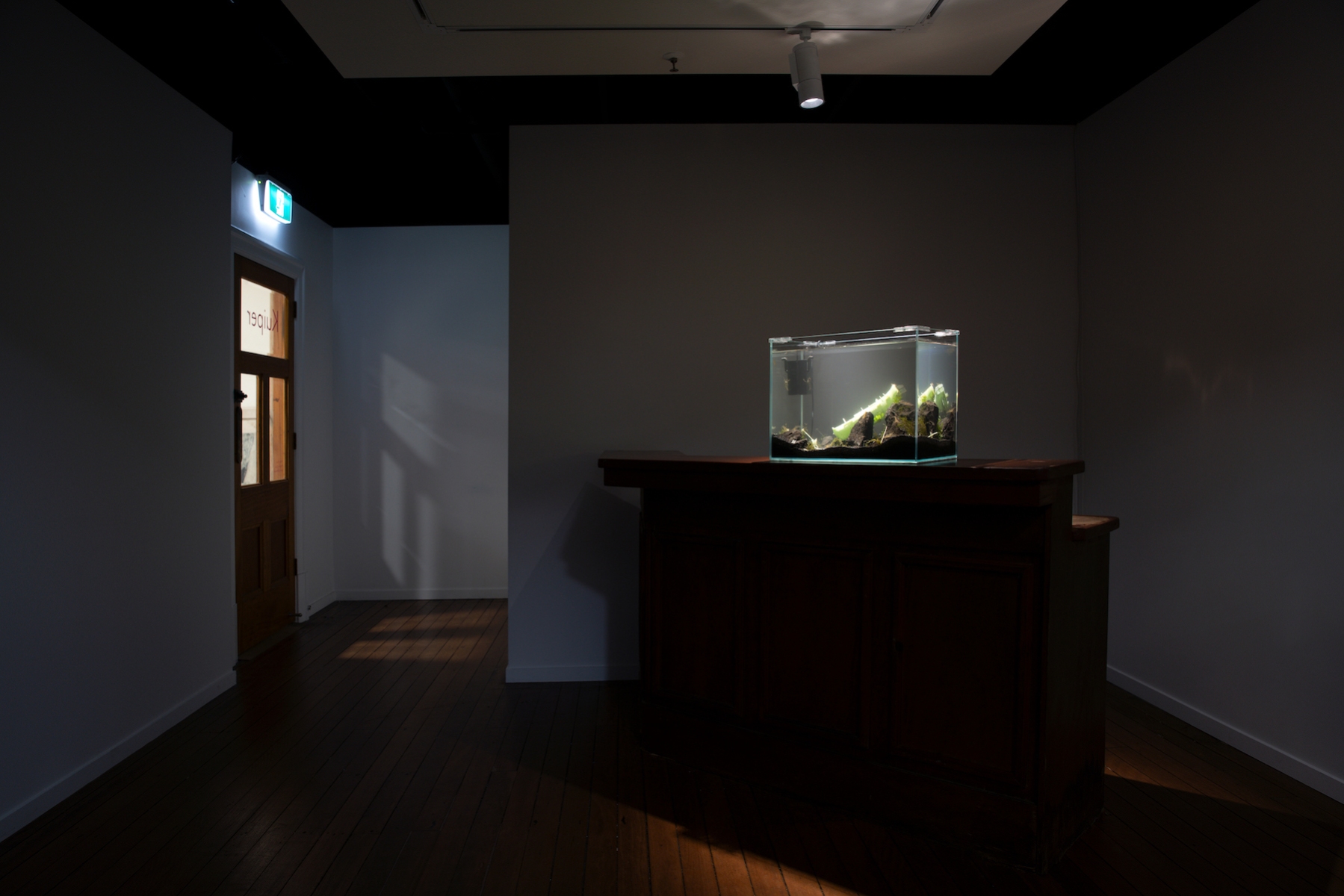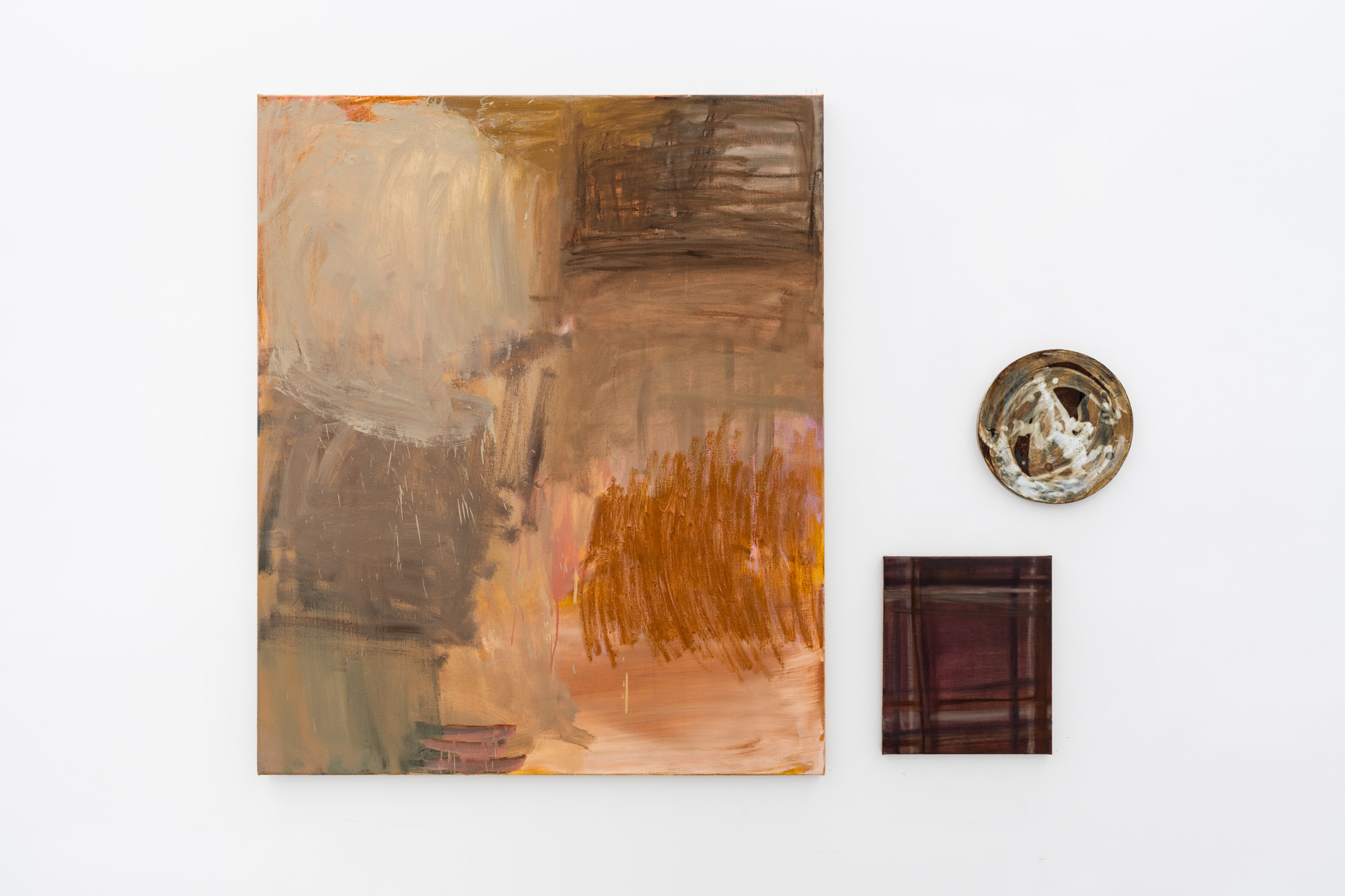Over the weekend, I eagerly attended two exhibition openings featuring work by local and emerging artists, Keemon Williams and Renee Kire. Despite only being in their mid-20s, Williams and Kire are quickly asserting themselves as artists with compelling art practices, amassing accolades and building impressive exhibition histories.
This year alone, Williams has featured at Milani Carpark Gallery, NorthSite Contemporary Arts and Botanica: Contemporary Art Outside. Kire, on the other hand, was recently selected to exhibit in the 2021 Hatched: National Graduate Show at the Perth Institute of Contemporary Art (PICA). This annual exhibition showcases graduating artists from across the county who represent the latest in critical art thinking and making.
With this in mind, I was excited to witness how these two graduates of Queensland University of Technology’s Creative Industries and Griffith University’s Queensland College of Art are navigating the art world, forging paths in two different, yet equally fascinating, directions.
Williams’ exhibition, sunk-cost fallacy, opened on Saturday morning at Kuiper, an artist-run initiative tucked away in the branches of Anzac Square Arcade. Entering the space, I encountered a protruding timber bar evocative of a 1980s man cave. On top of the counter perched an illuminated fish tank, brimming with activity. Submerged in the water was a crew of Ghost Shrimp moving around a shipwrecked model of the HMS Endeavour. This 3D-printed ship sculpture is a critical component within the work. The voyage of the Endeavour is often regarded as one of history’s greatest transatlantic journeys, responsible for expanding scientific knowledge of the Southern Pacific and charting new territories. Williams’ subverts this grandiose colonial narrative by portraying the vessel as shipwrecked, scaled down, and confined to the boundaries of a water filled tank.
Themes of the show were premised by its title—sunk-cost fallacy—a term that describes a “phenomenon whereby a person is reluctant to abandon a strategy or course of action because they have invested heavily in it, even when it is clear that abandonment would be more beneficial.” I was interested to learn more about the concept of a ‘sunk-cost fallacy’ throughout the artist talk, particularly in terms of beneficial abandonment. Williams opened a conversation with the audience that spoke to the materiality of the artwork, his art practice more broadly, and his experience of living in Meanjin as a queer artist of Koa, Kuku Yalanji, and Meriam Mir descent. He spoke about his desire to use playful aesthetics, such as a fish tank, for engaging with queerness, Indigeneity, and Australian identity; ideas that are heavy and, at times, emotionally taxing. I was surprised to find that the discourse was an integral part of this artwork. The timber bar offered a literal apparatus for hosting conversation and I was thankful for the free-flowing discussion that Williams so thoughtfully facilitated.
Later that evening, I made my way to Onespace to attend the opening of Kire’s exhibition, Any way, shape or form. After having exhibited exclusively in institutional and artist-run initiatives, Kire’s first solo exhibition in a commercial setting offers a new and exciting addendum in her career to date.
Contrasting with the dimly lit and intimate space of Kuiper, Kire’s work was bright and colourful against an illuminated, white gallery. I was delighted by the abundance of large-scale, pastel-coloured sculptural works whose forms bent, twisted and squirmed in expression. The u-shaped curves, angular lines, and open structures invoked playground equipment, almost begging to be walked under, slid down and climbed up.
As I weaved my way through the show, I felt inspired by Kire’s use of scale, colour, and placement to confidently occupy space and demand attention. In contrast to the stark, emotionless, ‘masculine’ aesthetic that often typified Minimalism, Kire has produced forms that are gentle and spirited. This response gestures to the artist’s desire to champion a feminist art history, by challenging the overdetermined male chronicle of Minimalism, which saw artists such as Donald Judd and Carl Andre overshadow their female counterparts. Kire takes cues from the vividly-coloured wood sculptures of Anne Truitt, the large-scale public works of Carmen Herrera, and the sculptural installations of feminist Judy Chicago. In turn, she celebrates the significance of their contributions to 1960s abstract art through the genre of sculpture. She elevates these artists while forging her own practice, which is focused on developing new techniques for bending and carving timber art forms, experimenting with colour, and testing the precariousness of the sculptural form itself.
During her artist talk, Kire discussed the possibility of working in the public art field, and her willingness to embrace new scales and materiality. I observed the possibility of her practice and am curious to see how it will continue to develop.
My attendance at the two exhibition openings allowed me to snapshot some of the varied opportunities available to emerging artists in Brisbane. Williams’ work was deeply embedded in discourse and exchange with an engaged art community. Kire presented a conceptually strong body of work for a broader audience, with commercial possibility. It was a pleasure to witness both, and I am inspired to see where they will go next.
sunk coast fallacy is open 3–10 June 2023
Any way, shape or form is open 2 June–1 July 2023
Gabrielle Bergman is an early-career curator, art historian and writer based in Meanjin / Brisbane. She is currently working as a Curatorial Assistant at the Museum of Brisbane.








